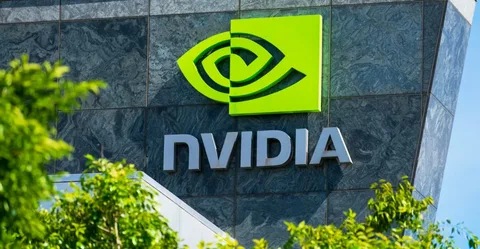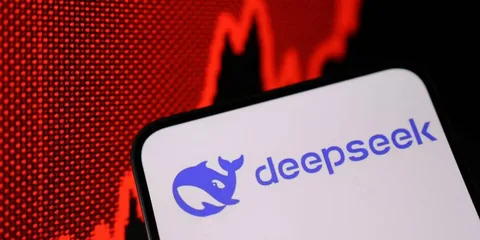US Blocks Chip Sales to China – How NVIDIA Still Fueled DeepSeek AI?
Introduction
The United States has intensified its efforts to limit China’s access to advanced semiconductor technology, citing national security concerns. Recently, the Biden administration announced new export controls restricting the sale of chip-making equipment and high-bandwidth memory to China. These restrictions aim to curb China’s ability to develop advanced semiconductors, which are crucial for artificial intelligence (AI) and military applications. However, despite these obstacles, NVIDIA’s China-based ecosystem has managed to thrive, contributing to the development of DeepSeek, a powerful AI model. This article explores how these U.S. sanctions impact China’s semiconductor industry and how NVIDIA, despite these restrictions, has continued to play a role in AI development in China.
U.S. Export Restrictions on China’s Semiconductor Industry
Key Aspects of the New Sanctions
The U.S. Commerce Department’s Bureau of Industry and Security has imposed strict regulations that:
- Ban the sale of 24 types of chip-making equipment and three software tools crucial for the production of advanced node semiconductors.
- Restrict the transfer of high-bandwidth memory products essential for AI and machine learning applications.
- Add 140 Chinese semiconductor firms to an entity list, requiring a special U.S. government license to do business with them.
National Security Concerns
The U.S. government argues that China could leverage advanced AI models for:
- Enhancing military battlefield capabilities.
- Developing cyberweapons.
- Strengthening surveillance systems for internal security and political control.
China’s Response
China has strongly opposed these measures, labeling them as economic coercion and a violation of market principles. The Chinese Embassy in Washington issued a statement condemning the U.S. for disrupting the global semiconductor supply chain. Meanwhile, China’s long-term goal has been to reduce its reliance on foreign technology and build a self-sufficient semiconductor industry.
The Impact of U.S. Sanctions on China’s Semiconductor Industry
Limiting China’s Access to Advanced Chips
The latest U.S. restrictions directly impact China’s ability to manufacture high-end AI processors and semiconductors, as the banned equipment includes:
- Extreme Ultraviolet Lithography (EUV) machines.
- High-performance etching and deposition tools.
- Advanced semiconductor design software.
Consequences for Chinese Semiconductor Firms
- Increased reliance on domestic semiconductor research: China is ramping up efforts to develop indigenous semiconductor fabrication technology.
- Higher production costs: The lack of access to cutting-edge tools makes it more expensive and challenging for Chinese firms to compete with global chipmakers.
- Expansion of partnerships with non-U.S. suppliers: China is strengthening ties with Japan, South Korea, and European nations to bypass some of the restrictions.

NVIDIA’s Role in China’s AI Advancements
How NVIDIA Built an AI Ecosystem in China
Despite U.S. restrictions, NVIDIA has played a significant role in developing AI research and innovation in China. Over the years, NVIDIA has built an extensive AI ecosystem that has enabled Chinese researchers, startups, and universities to work on cutting-edge AI models like DeepSeek.
- University Partnerships
- Collaborations with Tsinghua University, Peking University, and Shanghai Jiao Tong University to establish AI research labs.
- Curriculum development for AI and GPU programming.
- Research grants supporting AI innovation.
- Developer Programs
- The NVIDIA Developer Program provides access to CUDA, TensorRT, and DeepStream, enabling AI development in China.
- NVIDIA Inception Program supports AI startups by offering technical and marketing assistance.
- Competitions and AI Challenges
- NVIDIA sponsors AI hackathons and competitions, encouraging young Chinese developers to build innovative AI models.
- NVIDIA Student Ambassadors promote GPU computing in universities.

How DeepSeek Was Developed Despite U.S. Sanctions
DeepSeek is one of China’s most advanced AI models, developed using NVIDIA’s ecosystem despite the trade restrictions. Here’s how NVIDIA’s contributions helped enable its development:
- GPU Access (Despite Restrictions)
- Even though the U.S. banned the sale of NVIDIA’s A100 and H100 GPUs, China was still able to access earlier generations of NVIDIA GPUs and use them to train AI models like DeepSeek.
- Workarounds such as using older models like NVIDIA V100 or customized chips have allowed AI training to continue.
- Software Tools for AI Development
- NVIDIA’s CUDA, TensorRT, and cuDNN libraries remain widely used in China, allowing researchers to optimize their AI models.
- Open-source software and locally developed alternatives provide additional support.
- Leveraging Cloud and Distributed Computing
- Chinese AI firms and research labs have turned to cloud-based AI training to mitigate hardware shortages.
- Distributed computing strategies help overcome the limitations imposed by the U.S. restrictions.
- Knowledge Transfer and Research Collaboration
- NVIDIA researchers frequently collaborate with Chinese AI developers.
- Despite tensions, knowledge-sharing initiatives, joint research publications, and training workshops have continued in some capacity.
Challenges for China’s AI and Semiconductor Industry
While NVIDIA’s involvement has enabled AI progress, China still faces significant challenges in building a self-reliant semiconductor industry.
- Loss of Access to Cutting-Edge Hardware
- Without access to the latest NVIDIA GPUs, training larger and more advanced AI models becomes difficult.
- Higher AI Development Costs
- Developing proprietary semiconductor technology requires massive investment and years of research.
- Increased Geopolitical Pressure
- The U.S. is working with Japan, South Korea, and the Netherlands to tighten semiconductor restrictions further.
- Alternative Chip Development Efforts
- China is investing heavily in developing domestic semiconductor manufacturing capabilities through firms like SMIC (Semiconductor Manufacturing International Corporation).
- Exploring RISC-V architectures as an alternative to U.S.-controlled chip designs.
Can China Overcome U.S. Sanctions?
Despite the challenges, China remains determined to establish technological independence in the semiconductor industry. Here are some possible future developments:
- Expansion of China’s Domestic Chip Industry
- Increased investment in semiconductor fabrication plants.
- Stronger government-backed research into AI and semiconductor manufacturing.
- Developing AI Without Advanced NVIDIA Chips
- Alternative approaches such as hybrid computing models that combine older GPUs and cloud computing.
- Indigenous AI chips being developed by companies like Huawei (Ascend AI chips) and Alibaba (Hanguang AI chips).
- Stronger Global Partnerships
- China is likely to collaborate with non-U.S. semiconductor firms to reduce dependence on American technology.
- Expanding cooperation with countries that are not aligned with U.S. policies on export restrictions.
Conclusion
The U.S. decision to block the sale of advanced chip-making equipment to China is a significant move aimed at restricting China’s AI and semiconductor capabilities. However, despite these limitations, NVIDIA’s presence in China has enabled the development of AI models like DeepSeek through its extensive ecosystem, training programs, and software tools. While U.S. sanctions create substantial hurdles, China’s AI and semiconductor industries continue to evolve, exploring alternative solutions to maintain technological progress. The future of China’s AI development will largely depend on its ability to innovate despite restricted access to cutting-edge hardware and semiconductor manufacturing tools.v




Post Comment